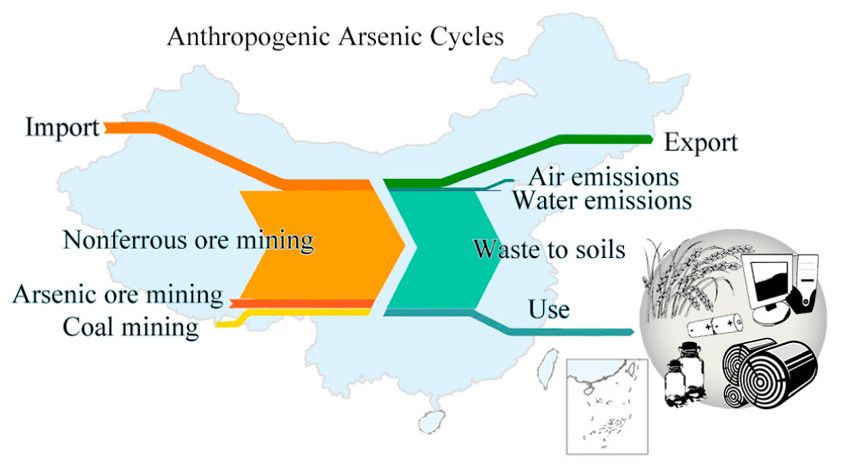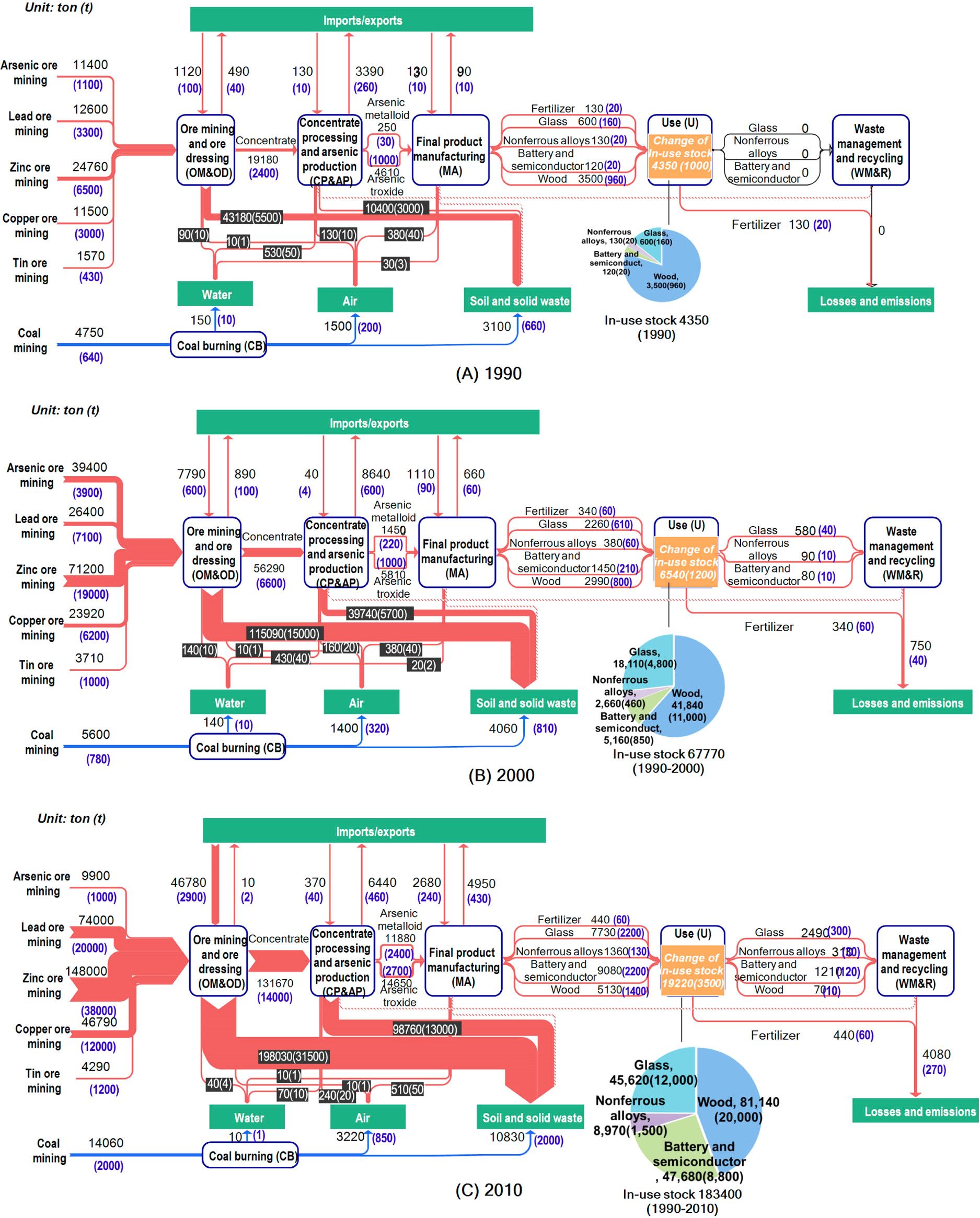Shi, Ya-Lan; Chen, Wei-Qiang*; Wu, Shi-Liang; Zhu, Yong-Guan
Environmental Science & Technology 2017 51 (3), 1670–1678. DOI: 10.1021/acs.est.6b01669
Abstract
Arsenic (As) is a trace element in the global environment with toxicity to both humans and ecosystem. This study characterizes China’s historical anthropogenic arsenic cycles (AACs) from 1990 to 2010. Key findings include the following: (1) the scale of China’s AACs grew significantly during the studied period, making China the biggest miner, producer, and user of arsenic today; (2) the majority of arsenic flows into China’s anthroposphere are the impurity of domestically mined nonferrous metal ores, which far exceeds domestic intentional demands; (3) China has been a net exporter of arsenic trioxide and arsenic metalloid, thus suffering from the environmental burdens of producing arsenic products for other economies; (4) the growth of arsenic use in China is driven by simultaneous increases in many applications including glass making, wood preservatives, batteries, semiconductors, and alloys, implying the challenge for regulating arsenic uses in multiple applications/industries at the same time; (5) the dissipative arsenic emissions resulting from intentional applications are at the same order of magnitude as atmospheric emissions from coal combustion, and their threats to human and ecosystem health can spread widely and last years to decades. Our results demonstrate that the characterization of AACs is indispensable for developing a complete arsenic emission inventory.
Graphic Abstract

Anthropogenic arsenic cycles related to intentional uses in China for 1990, 2000, and 2010.
